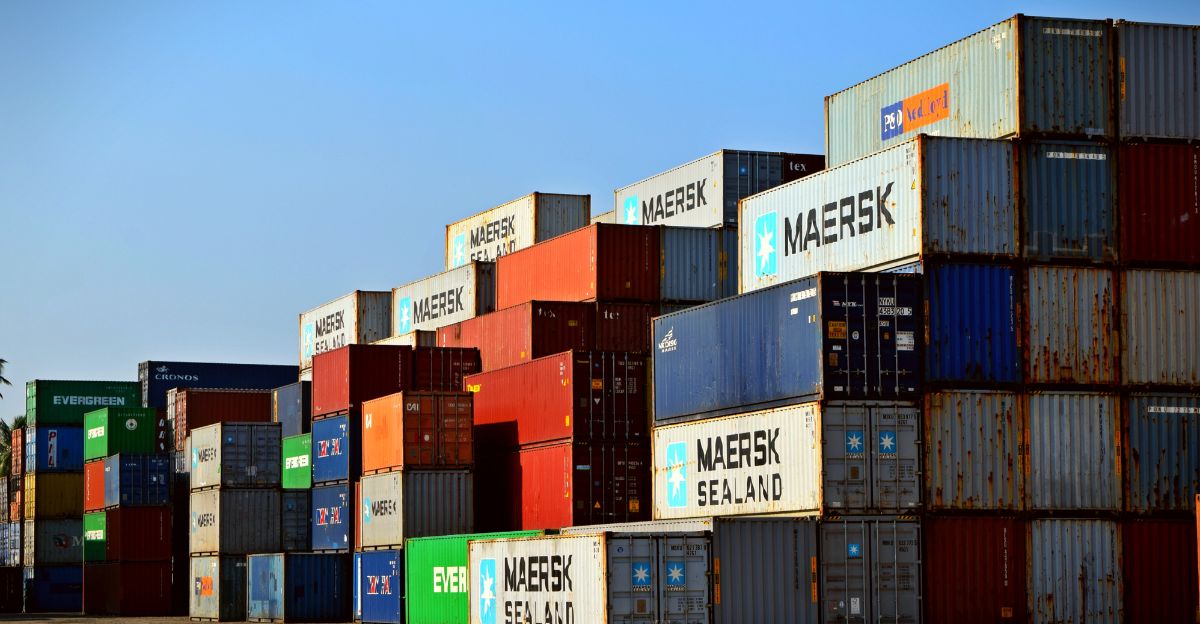
If there’s one thing the world can’t go without, it’s wheat, and these shocking cancellations are taking the world by storm. This development shocks American farmers and exporters, who face mounting storage costs and uncertainty over future demand. The sudden reversal in international buying patterns signals deeper challenges within the agricultural sector, from shifting trade alliances to volatile commodity prices.
These cancellations have left 128,800 tons of wheat unsold and languishing in storage. The farming industry is already under a lot of pressure, and this waste places it under even more stress. Will the sector survive?
Why Are Orders Being Cancelled?

These sudden cancellations are based on multiple factors, such as economic, regulatory, and logistical pressures. Fierce competition from countries like Russia, Canada, and Australia, which are offering wheat at lower prices, has made American grain less attractive to global buyers. At the same time, stricter quality and pesticide standards in key markets such as Europe and Asia, as well as concerns over chemical residues, have led to outright rejections or non-compliance issues for U.S. wheat.
“Whether they are doing it to buy again cheaper or because there’s less demand, it is still a bearish view on the market,” said Andrew Whitelaw, an agricultural consultant.
The Scale of the Cancellations

According to the U.S. Department of Agriculture, for the week ending May 22, 2025, cancellations of U.S. wheat exports outpaced new sales by a staggering 128,800 metric tons, a reversal not seen in decades. Major buyers, including the Philippines, South Korea, and Mexico, abruptly left contracts, leaving vast quantities of wheat stranded in storage or at ports.
The impact has been especially pronounced in key wheat-producing states like Kansas and North Dakota, where farmers face mounting financial pressure. China alone has canceled over 500,000 tons of previously scheduled U.S. wheat shipments in 2024 and 2025, marking the largest wave of cancellations ever recorded by the U.S. Department of Agriculture since records began in 1999.
Global Buyers Turn Elsewhere

Russia has cemented its dominance as the world’s leading wheat exporter, aggressively undercutting competitors with low prices and abundant supply, especially in key markets across Africa and the Middle East. Australia and Canada have also seized the opportunity, leveraging strong harvests and reliable logistics to capture market share once held by the U.S.
“Those cancellations show that China can get wheat cheaper from others,” said Ben Buckner, chief grains analyst for Chicago-based AgResource Co.
The Impact on American Farmers

Farmers are taking the biggest hit with these sudden cancellations. Seeing a harvest go to waste is heartbreaking, as if the agricultural industry didn’t have enough problems. Many producers, already operating on thin margins, now face mounting storage costs as unsold wheat piles up in silos and at elevators. The abrupt loss of international buyers has led to plummeting local prices, forcing some farmers to sell at a loss or delay sales in hopes of a market rebound.
The uncertainty has also intensified stress and anxiety among farming families, making the intense pressure worse than before, as they do not know the future.
Shipping and Logistics Challenges

Besides having to worry about challenges in tariffs, orders, and so much more, farmers also have to worry about the logistics of getting their shipments where they need to be. Due to ongoing geopolitical tensions, disruptions in key maritime routes, particularly the Red Sea and Suez Canal, have forced vessels to take longer, costlier detours, driving up freight rates and insurance premiums for American grain.
Inland bottlenecks, like low water levels in the Midwest and stricter border controls with Mexico, have further delayed shipments and undermined the reliability of U.S. supply chains. These logistical hurdles have made American wheat less attractive to buyers, who now favor suppliers with smoother, faster delivery routes like Canada and Australia.
Price Pressures and Market Competition

The wheat market is under pressure due to record production and fierce competition among major exporters. U.S. wheat prices have softened, with the season-average farm price dropping to around $5.40–$5.50 per bushel. Russia remains the world’s top wheat exporter for the sixth consecutive year, while the EU is rebounding with a 14% production increase, further crowding the marketplace.
“FOB prices for Russian and Ukrainian wheat have dropped below $200 per tonne, while US SRW prices are over $220 per tonne. Russia’s exports are further aided by its weak currency. The market is also pricing in expectations for another big Russian wheat crop with soil moisture in the region being favorable heading into spring,” said Tanner Ehmke, grains and oilseeds economist for CoBank.
The Global Food Supply Chain at Risk

In 2025, a volatile mix of geopolitical conflict, climate extremes, and logistical breakdowns has intensified the risk of food disruptions worldwide. Export restrictions and stockpiling by some governments are straining international markets, driving up prices, and fueling food insecurity in vulnerable regions. With the global wheat trade concentrated among many exporters, even localized disruptions can trigger cascading shortages and price spikes worldwide.
People often forget just how vulnerable the world truly is and how reliant nations are upon each other to provide the food and services needed for people to survive.
Hope on the Horizon?

Wheat production in the United States is showing signs of recovery, with an 8% increase over the recent five-year average, and ending stocks are projected to build for a third consecutive year. On the global stage, wheat production is expected to rise slightly, with strong yields in the European Union and India offsetting declines elsewhere, and international trade is forecast to rebound as import demand from Asia increases partially.
Expert Perspectives

Everyone has an opinion on what might or might not happen, which is a lot of speculation, but experts have proven spot on in the past. Experts point to the erosion of trust in the U.S. as a reliable supplier, with major importers like the Philippines and France citing certification gaps, pesticide concerns, and unpredictable policy shifts as key reasons for seeking alternatives.
USDA analysts say that, despite a projected five-year high in U.S. wheat exports for 2025/26, fierce competition from Russia, Canada, and the European Union continues to limit growth potential, keeping prices under pressure and squeezing farm incomes.